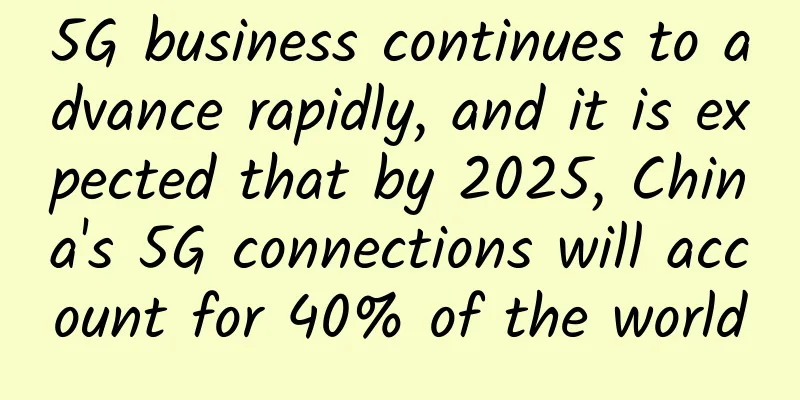5G business continues to advance rapidly, and it is expected that by 2025, China's 5G connections will account for 40% of the world

|
According to GSMA think tank statistics, as of the end of the third quarter of 2021, the number of 5G networks in the world has grown to 176, and the number of 5G connections has reached about 550 million. Among them, China's 5G connections account for 78% of the world's total 5G connections, about 430 million. By the end of 2021, nearly 8% of the world's consumer groups, about 640 million users, will use 5G. The continuous network construction of operators plays a vital role. It is expected that by the end of 2021, the 5G penetration rate in South Korea and China will exceed 30%, accounting for 32% and 30% of the total mobile connections respectively. It is expected that by 2025, the total number of 5G connections in China will reach 865 million, accounting for 40% of the total number of 5G connections in the world, and China's 5G penetration rate will exceed 50%. Against the backdrop of the rapid global deployment of 5G, the revenue structure of global operators has changed. In addition to traditional telecommunications revenue, revenue from new services has increased significantly, and China's performance in revenue growth has been particularly impressive. In 2020, the proportion of traditional telecom business revenue in total revenue dropped to 76%, while the proportion of new business revenue outside traditional telecom business increased to 24%. Among them, China's revenue growth outside traditional telecom business leads the world. In 2020, the average year-on-year growth rate of global operators' revenue outside traditional telecom business was 9%, while China's figure reached 26%, far higher than the global average. 5G is an important catalyst and driving force. China's three major operators, China Mobile, China Unicom, and China Telecom, doubled their revenue outside of traditional businesses in 2020 compared with 2017 to RMB 230 billion, with the growth of B2B business being the main driving force. Cloud revenue increased sevenfold from 2017 to 2020, and revenue from the Internet of Things and data each doubled. |
<<: Difference between web scraping and web crawling
Recommend
How to tell if Wi-Fi 6 is right for you
There is a lot of discussion around the next gene...
Japanese media: China may be the first to master 5G international standards
China, which has no say in almost all modern scie...
my country has built more than 2.93 million 5G base stations, and the number of 5G mobile phone users has reached 676 million.
July 19 news, at today's State Council Inform...
7 excellent open source network monitoring tools
Network health is a measure of the health of the ...
5G and the Internet of Things empower the home appliance industry to promote the consumption of green and energy-saving home appliances
The great progress of social productivity has giv...
In 2025, what directions in the communications industry are worth paying attention to?
Time flies, and in the blink of an eye, 2024 is o...
Game lag? Be careful to use the wrong WiFi frequency at home
When you use WiFi at home to play games, you alwa...
TMThosting: Seattle high-security VPS monthly payment 30% off, optional HDD/SSD/NVMe disk, support Alipay
TMThosting is a foreign hosting company founded i...
The champion of Huawei Elite Competition is about to be announced. Who will win the highest title of Huawei ICT Talent?
In a few days, the finals of the two exciting eve...
DigitalOcean: AMD EPYC+NVMe series are all online, and 8 computer rooms support hourly billing
The tribe has not shared information about Digita...
How intermittent-link ribbon fiber revolutionizes the communications industry
Fiber optic technology has revolutionized communi...
What power will the combination of 5G and intelligent automation bring?
It can be said that 5G and intelligent automation...
Experts give reasons for slow 4G network speed: too many users and bloated apps
Do you feel that the current 4G network speed is ...
Users say | "Double High Construction" improves the level of informatization: Etherlight helps Xi'an Railway Vocational and Technical College in its intelligent digital transformation
Introduction: Xi'an Railway Vocational and Te...
How to enable owners and facility managers to realize smart buildings
Building owners and facility managers are turning...









